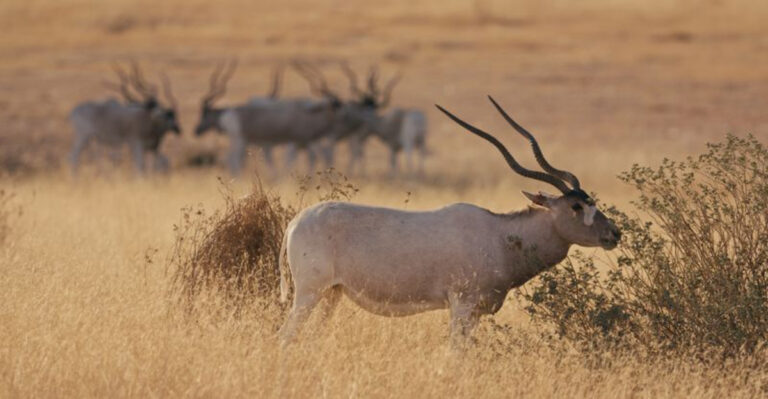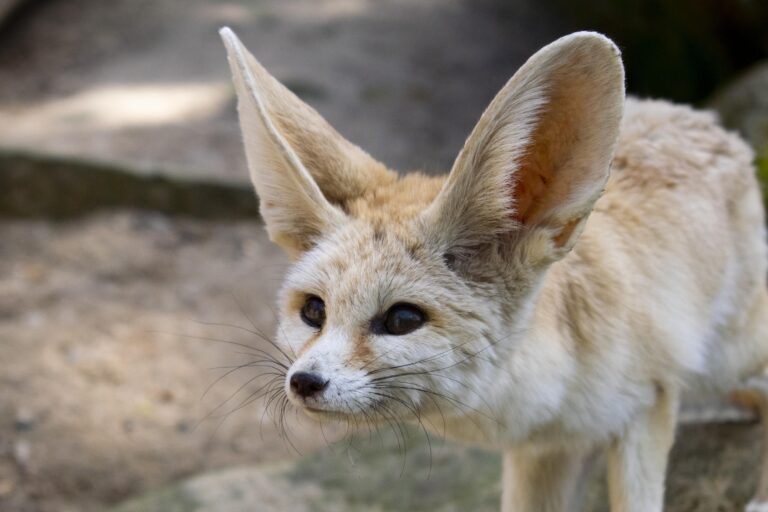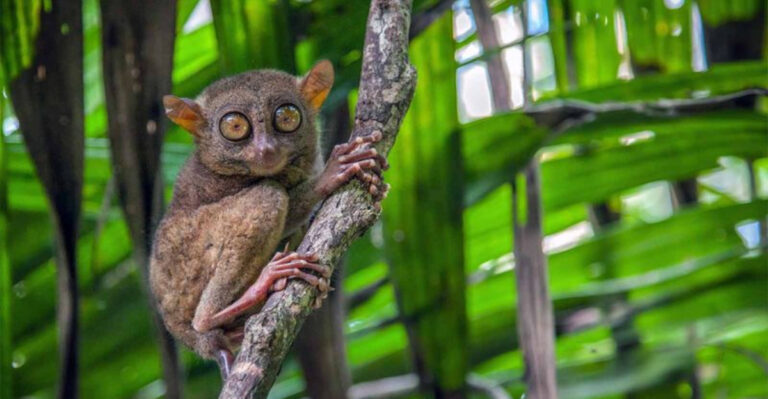14 Things You Might Not Know About Gorillas
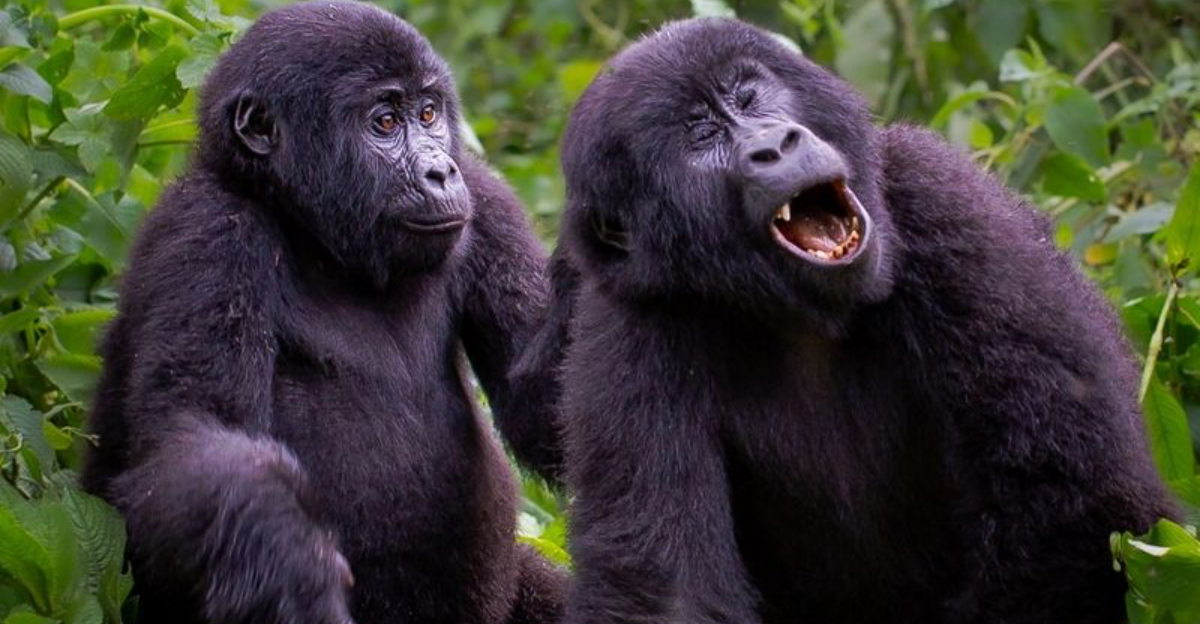
Gorillas are remarkable creatures with fascinating behaviors and characteristics that many people are unaware of. In this blog post, we will explore fourteen intriguing aspects of gorillas that might surprise you, ranging from their unique physical traits to their social behaviors and environmental impact.
1. Gorillas Use Tools Like Humans
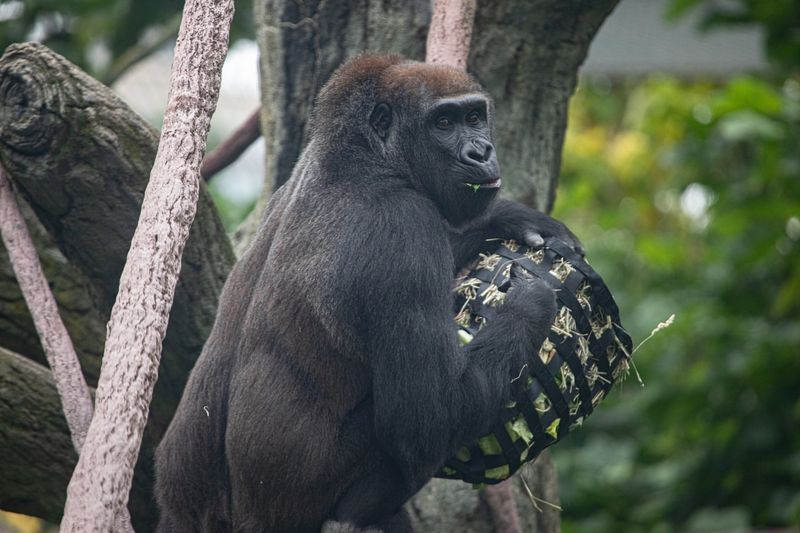
Gorillas are known to use tools in the wild, an impressive behavior that highlights their intelligence. In their natural habitats, these great apes have been observed using sticks to gauge the depth of water, allowing them to safely cross streams. Moreover, they utilize branches to pull down fruit-laden branches or to gather ants for a tasty snack.
This tool-using ability not only demonstrates their cognitive skills but also draws a fascinating parallel to human evolution and our own use of tools. Observations of gorillas in captivity further reinforce this behavior, where they might use objects to reach food or to clean themselves.
The understanding and application of tools in gorilla communities underline a deeper awareness of their environment and problem-solving capabilities, making them a subject of continual study and admiration in the scientific community.
2. Each Gorilla Has A Unique Nose Print

Just like humans have unique fingerprints, each gorilla boasts a distinctive nose print. This unique feature allows researchers and conservationists to identify individual gorillas in the wild, making it easier to track and study them over time.
The nose print acts as a natural identification tool, aiding in the conservation efforts aimed at protecting these magnificent creatures. By documenting these prints, scientists can monitor the movements, health, and social interactions of gorilla troops without invasive techniques.
This method has greatly contributed to understanding gorilla populations and their dynamics, allowing for targeted efforts in preserving their habitats and ensuring their survival for future generations. The uniqueness of each nose print highlights the individuality of gorillas, much like the diversity found within human populations.
3. Chest Beating Isn’t Just For Show
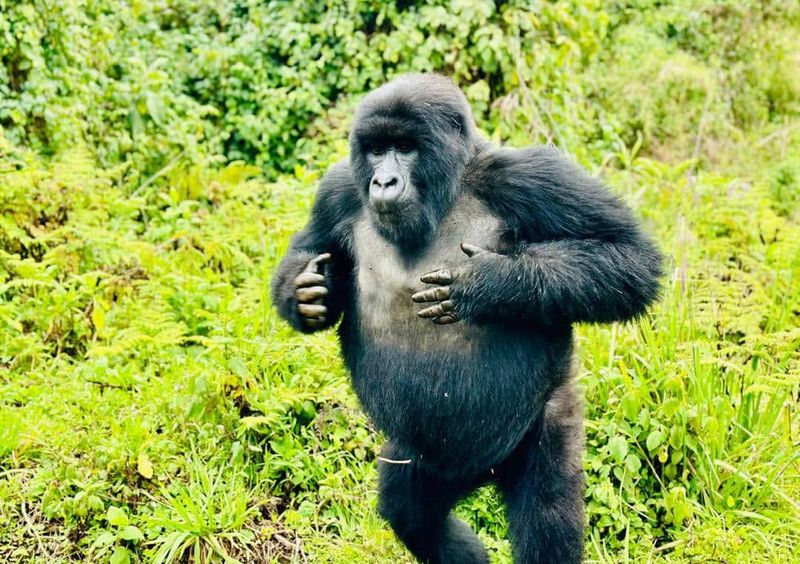
Chest beating in gorillas is often misunderstood as an aggressive display, but it serves multiple purposes in their social structure. Primarily, it acts as a form of communication, allowing gorillas to convey their presence and strength to others without resorting to physical confrontation.
For the dominant male, the silverback, chest beating can also be a way to assert authority and maintain order within the troop. Younger males might engage in this behavior as a form of play or to practice for future leadership roles.
This non-verbal form of communication showcases the complexity of gorilla interactions and emphasizes the importance of social bonds within their communities. Understanding these behaviors helps us appreciate the intricate social lives of gorillas, shedding light on their intelligence and adaptability.
4. They Have A Secret Language
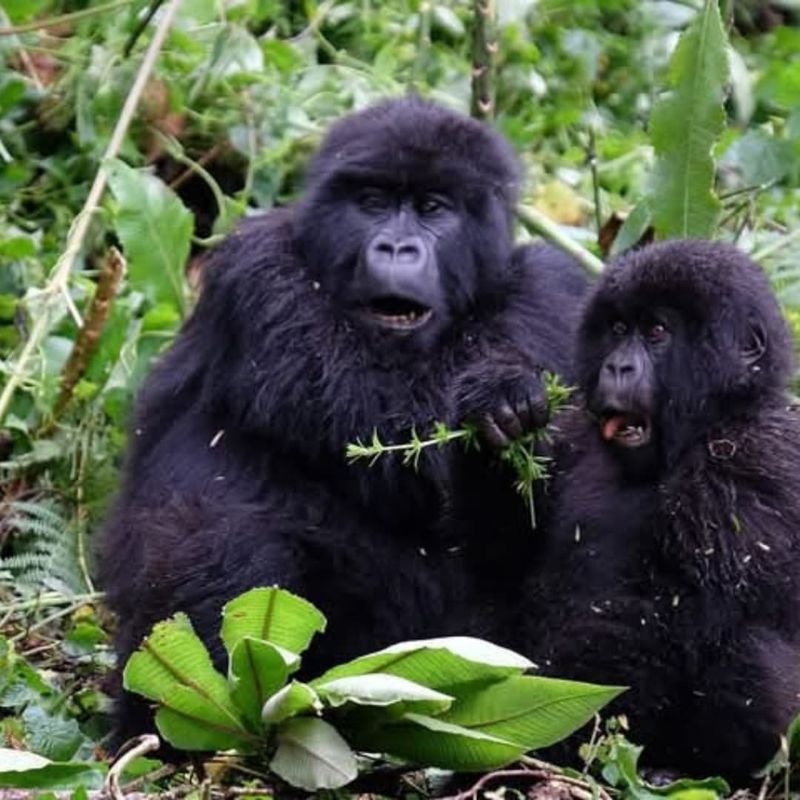
Gorillas possess a complex system of communication that includes a variety of vocalizations, gestures, and facial expressions. This secret language allows them to convey emotions, intentions, and social cues to one another effectively.
Through grunts, roars, and barks, gorillas can express happiness, alarm, or displeasure, ensuring that their messages are clearly understood by other members of the troop. Additionally, gestures such as chest beating, grooming, and play behaviors further enrich their communicative abilities.
The study of gorilla communication has provided valuable insights into the evolution of language in humans, as many of their gestures and sounds parallel those used in human interaction. This intricate system highlights the intelligence and emotional depth of gorillas, offering a glimpse into the rich tapestry of their social lives.
5. Young Gorillas Are Little Heroes
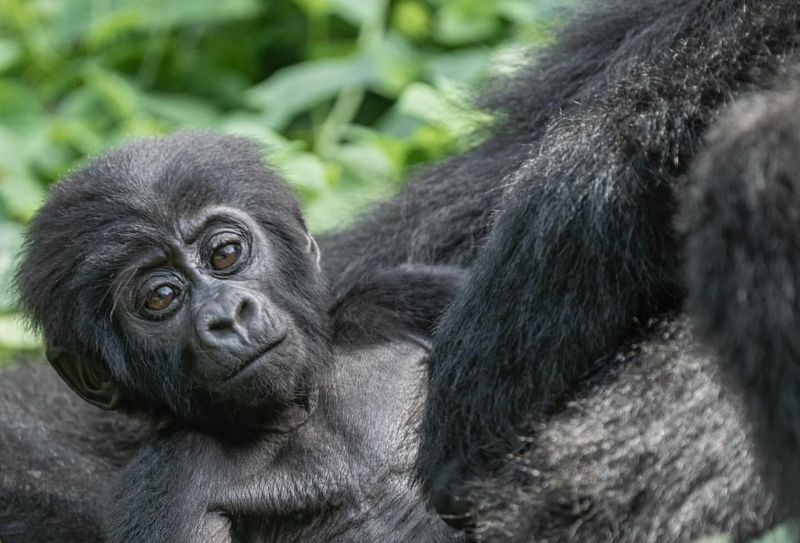
Young gorillas often display behaviors that can be described as heroic, particularly in how they interact with their peers and family members. These little heroes are known to assist in the care of younger siblings, helping mothers by keeping an eye on the infants or playing gently with them.
Their playful nature also contributes to the social cohesion of the troop, as games and interactions foster bonds and teach important social skills. Young gorillas often imitate adult behaviors, learning essential survival techniques that will aid them in adulthood.
These actions not only ensure the well-being of their community but also highlight the nurturing and empathetic nature of gorillas. Observing these behaviors in young gorillas offers a heartwarming glimpse into the compassion and cooperation that defines gorilla society, reinforcing their role as intelligent and social beings.
6. They Love To Play Around
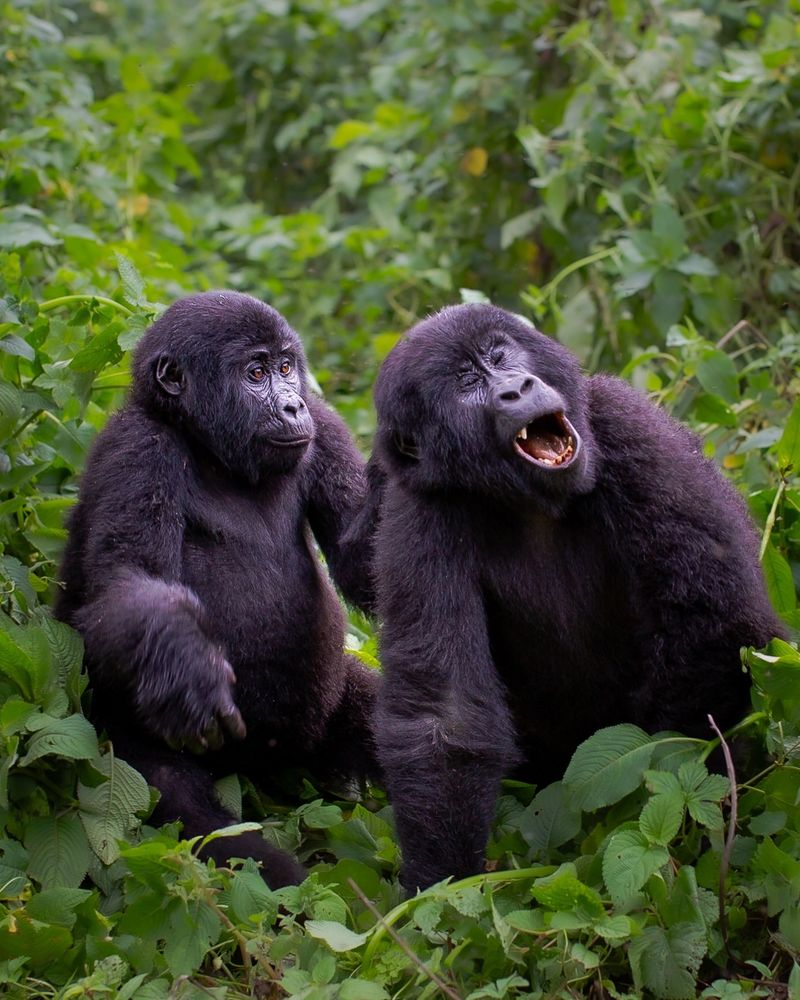
Play is an essential part of gorilla life, providing both physical exercise and social interaction. Gorillas of all ages engage in playful activities, from chasing one another to swinging between trees, which helps build strong muscles and coordination.
This playful behavior is not just about fun; it plays a crucial role in the development of social skills, as young gorillas learn to navigate the complex dynamics of their troop. Through play, they learn boundaries, cooperation, and communication, essential traits for their future roles within the group.
The joy and energy exhibited during playtime reflect the vibrant and social nature of gorillas, offering observers a delightful view of their intelligence and emotional depth. It emphasizes the importance of preserving their natural habitats, where they can thrive and continue to engage in these enriching activities.
7. Gorillas Don’t Need To Drink Much Water
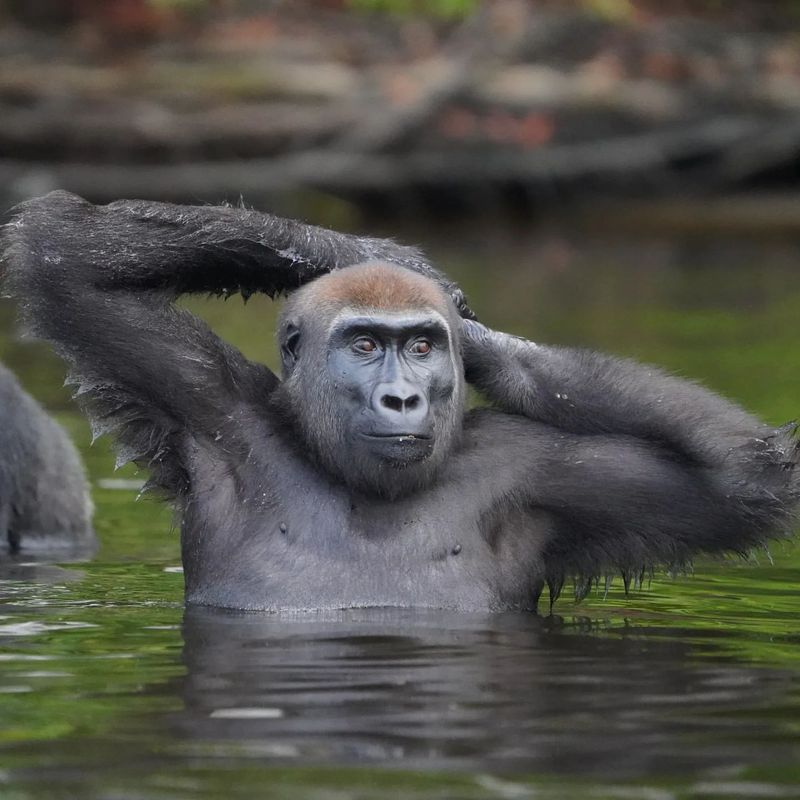
Gorillas have adapted to their environment in fascinating ways, one of which is their minimal need to drink water directly. Living in lush, tropical forests, gorillas consume a diet rich in moisture-laden vegetation, such as leaves, stems, and fruits.
This diet provides the majority of their hydration needs, allowing them to thrive without seeking out water sources regularly. Their ability to extract sufficient water from their food reflects an impressive adaptation to their environment, reducing the risks associated with venturing to potentially dangerous waterholes.
Understanding this aspect of gorilla biology highlights the intricate balance they maintain with their ecosystem and the importance of preserving their natural habitats. Ensuring the availability of their preferred plant-based diet is crucial for their survival and well-being, emphasizing the need for conservation efforts in these biodiverse regions.
8. Silverbacks Rule The Jungle Family
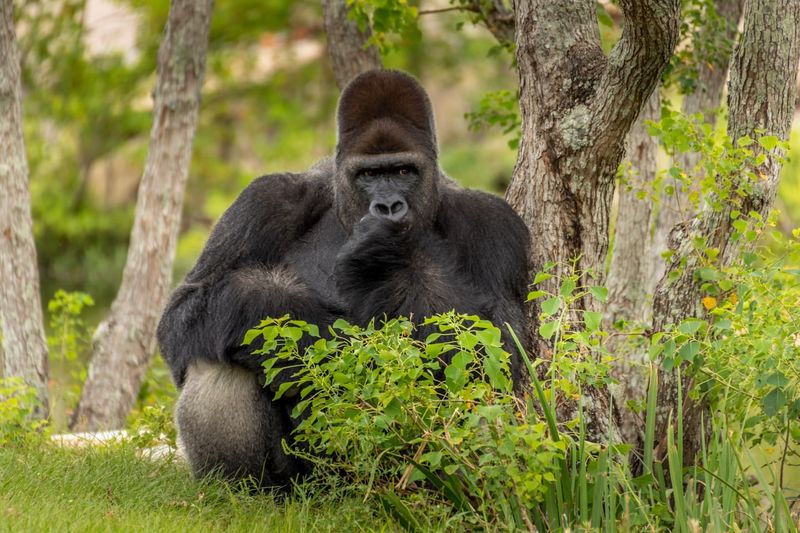
The silverback gorilla, with its distinctive silver hair on its back, is the leader of the gorilla troop. This dominant male plays a crucial role in the social structure, providing protection, guidance, and leadership to the group.
Responsible for making critical decisions, such as when and where to forage, the silverback also resolves conflicts within the troop and ensures the safety of its members. His presence is a stabilizing force, maintaining harmony and order within the family.
The respect and authority commanded by the silverback underscore the importance of strong leadership in gorilla society. Observing these powerful figures in their natural habitat reveals the dynamics of gorilla communities and the significance of preserving their roles within the ecosystem.
9. They Walk On Their Knuckles
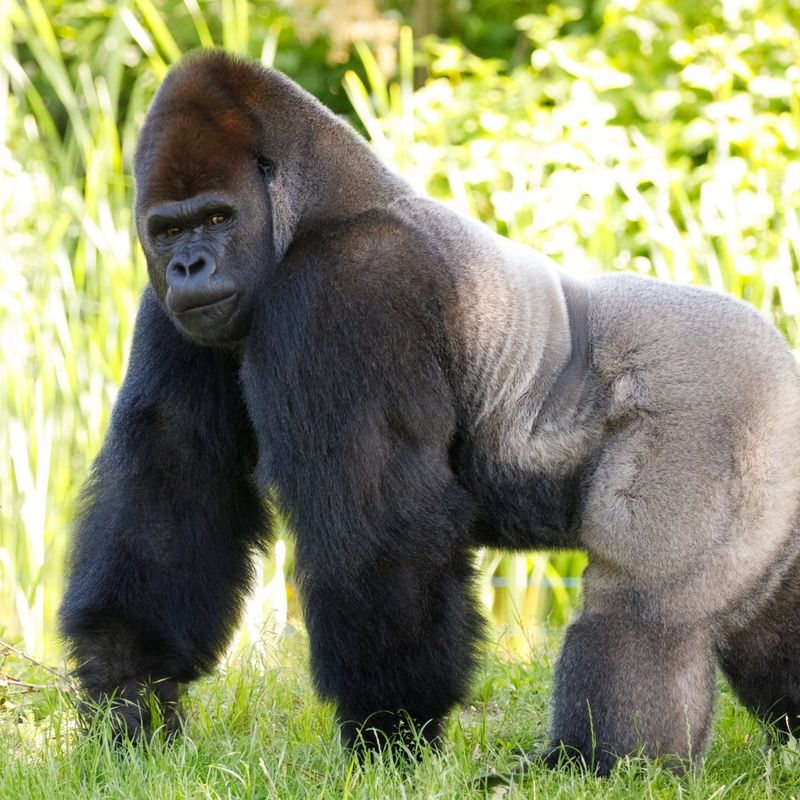
Gorillas exhibit a unique form of locomotion known as knuckle-walking, where they walk on all fours with their knuckles making contact with the ground. This adaptation is crucial for supporting their large body weight while allowing them to move efficiently through their forested habitats.
Knuckle-walking enables gorillas to maintain balance and stability, essential for navigating the uneven terrain of the jungle. Their strong arms play a vital role in this movement, reflecting their physical strength and adaptability.
Understanding this distinctive movement not only deepens our appreciation for gorillas’ physical adaptations but also offers insights into the evolutionary pathways shared by great apes and humans. By studying gorillas’ locomotion, researchers gain valuable knowledge about the development of bipedalism in our own lineage.
10. Gorillas Are Strong But Calm
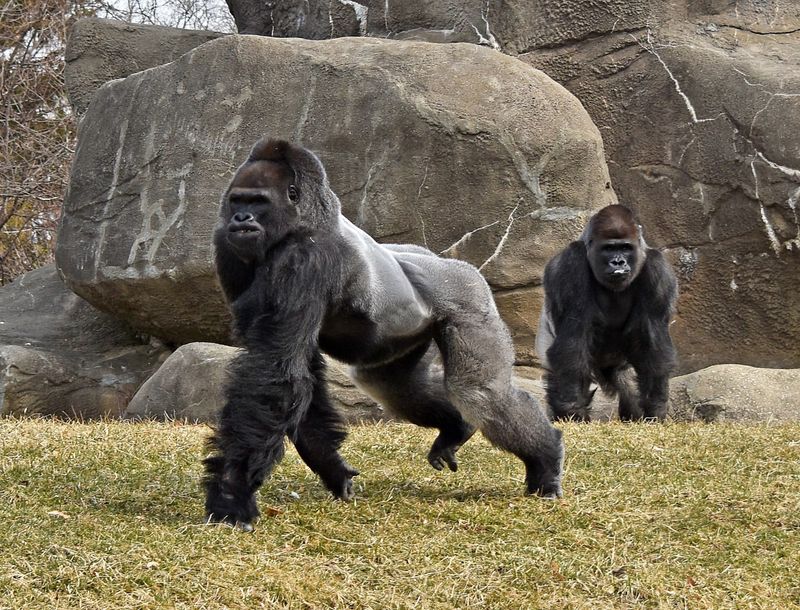
Gorillas possess incredible strength, with males capable of lifting and breaking objects many times their own body weight. Despite their formidable physical power, gorillas are generally calm and gentle creatures, preferring peaceful resolutions over aggression.
This combination of strength and tranquility is a defining characteristic of gorillas, allowing them to thrive in complex social structures. Their ability to remain composed under pressure fosters harmony within their troop and minimizes conflicts.
By understanding the balance of strength and calmness in gorillas, we gain insights into their social dynamics and the importance of cooperation and empathy. These qualities make gorillas not only fascinating subjects of study but also powerful symbols of peace and strength in the animal kingdom.
11. They Live In Big Families Called Troops
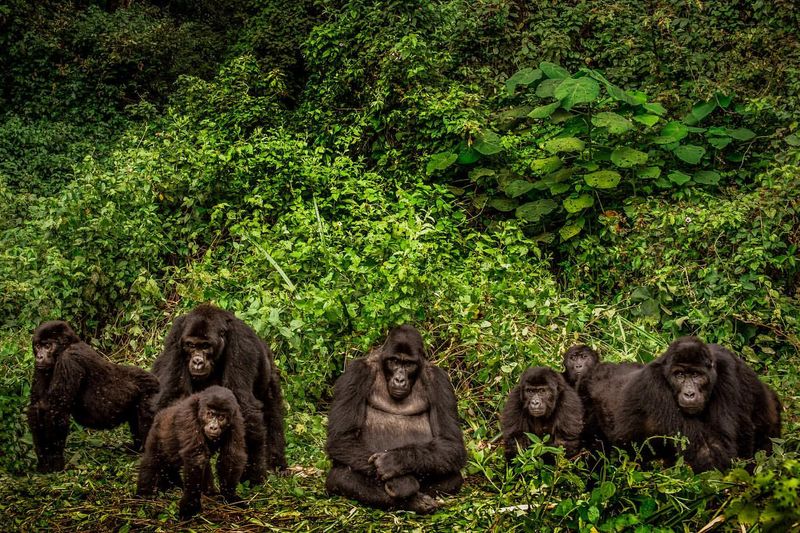
Gorillas are highly social animals that live in large family groups known as troops. These troops are typically led by a silverback male and can consist of multiple females, their offspring, and sometimes other males.
The social structure of a troop is complex, with members forming strong bonds through grooming, playing, and shared activities. These interactions are crucial for maintaining the group’s cohesion and ensuring the well-being of all members.
Observing gorilla troops in the wild provides insights into the importance of family and community in gorilla society. Their social organization emphasizes cooperation, communication, and mutual support, reflecting values that resonate deeply with human communities. This understanding highlights the significance of preserving gorilla habitats, where these intricate social structures can continue to thrive.
12. Gorillas Are Nature’s Gardeners
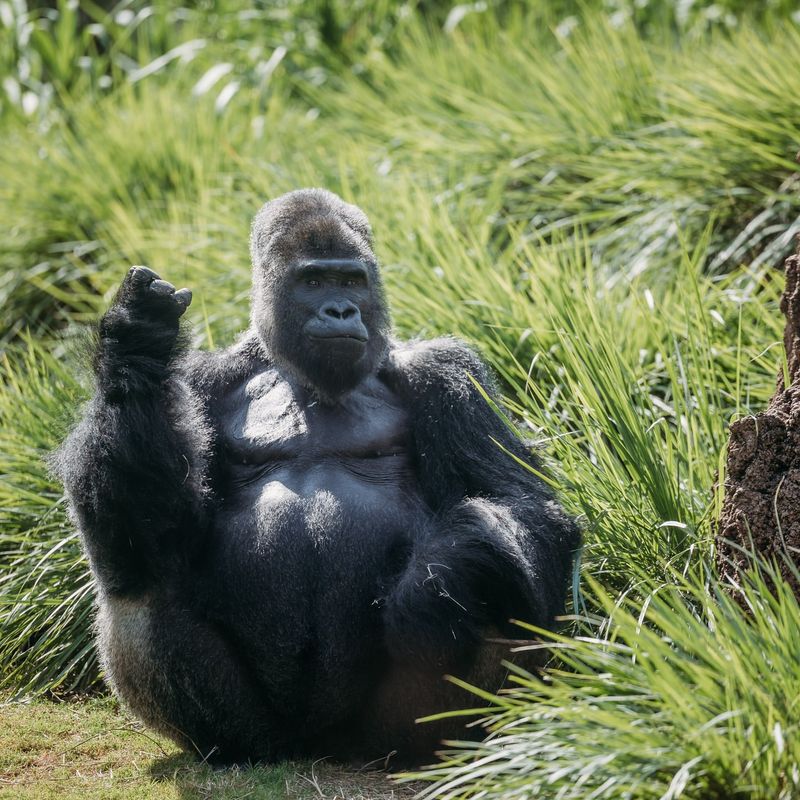
Gorillas play a vital role in their ecosystems as nature’s gardeners, contributing to the health and diversity of their habitats. By consuming a wide variety of fruits and plants, gorillas aid in seed dispersal, as the seeds pass through their digestive systems and are deposited in different locations.
This natural process enhances plant biodiversity and helps maintain the balance of the forest ecosystem. Gorillas’ foraging activities also aid in the pruning of vegetation, promoting new growth and supporting a wide range of plant and animal species.
The ecological contributions of gorillas underscore the interconnectedness of species within their environments and the importance of protecting these key players. By safeguarding gorilla populations and their habitats, we ensure the continued health of the ecosystems they inhabit, benefiting countless other species and preserving the natural world for future generations.
13. Gorillas Hum While They Eat
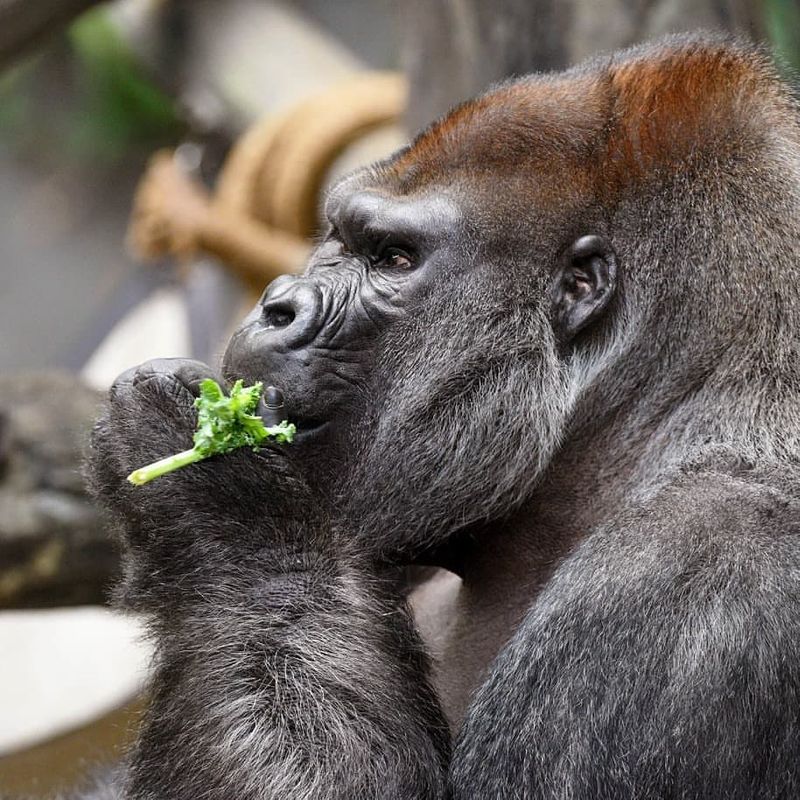
Gorillas have been observed humming while they eat, a behavior that indicates contentment and satisfaction. This soft vocalization occurs primarily during mealtime, creating a harmonious atmosphere within the troop as they enjoy their food together.
The act of humming while eating not only reflects the pleasure gorillas derive from their meals but also reinforces social bonds among troop members. Sharing food and mealtime vocalizations strengthen the sense of community and belonging within the group.
This intriguing behavior offers a glimpse into the emotional lives of gorillas and their capacity for joy and camaraderie. It highlights the importance of preserving their natural habitats, where they can continue to thrive and express these enriching behaviors. Understanding gorillas’ dining habits adds another layer to our appreciation of these remarkable creatures.
14. Their Arms Are Longer Than Their Legs
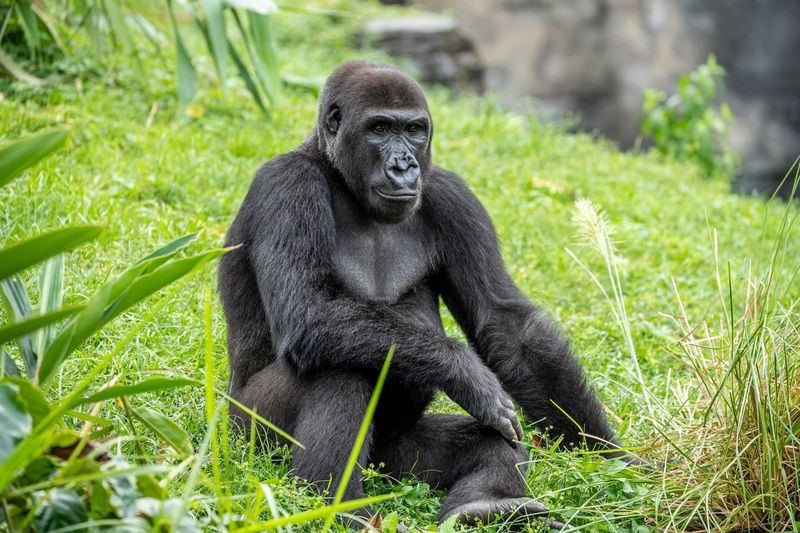
Gorillas possess a unique physical trait in which their arms are longer than their legs. This anatomical feature is highly advantageous for their arboreal lifestyle, allowing them to navigate through the forest canopy with ease.
The elongated arms provide gorillas with greater reach and strength, enabling them to swing from branches, climb trees, and gather food efficiently. This adaptation is crucial for their survival, as it facilitates access to a diverse range of resources within their environment.
The study of gorillas’ physical adaptations offers insights into their evolutionary history and the development of similar traits in other primates. By understanding these unique characteristics, researchers can better appreciate the diversity and complexity of life within the animal kingdom, highlighting the importance of conserving these remarkable creatures and their habitats.

